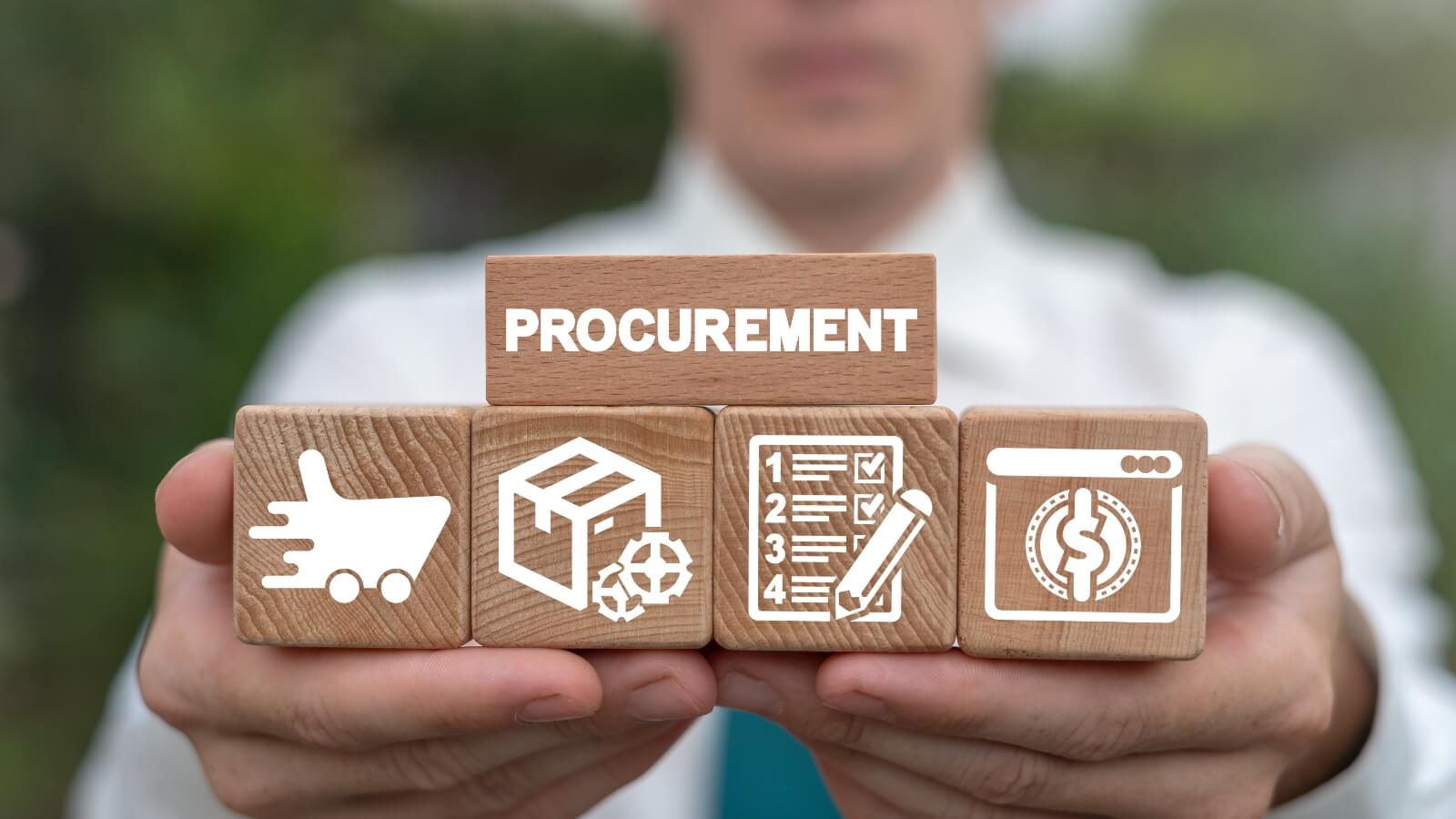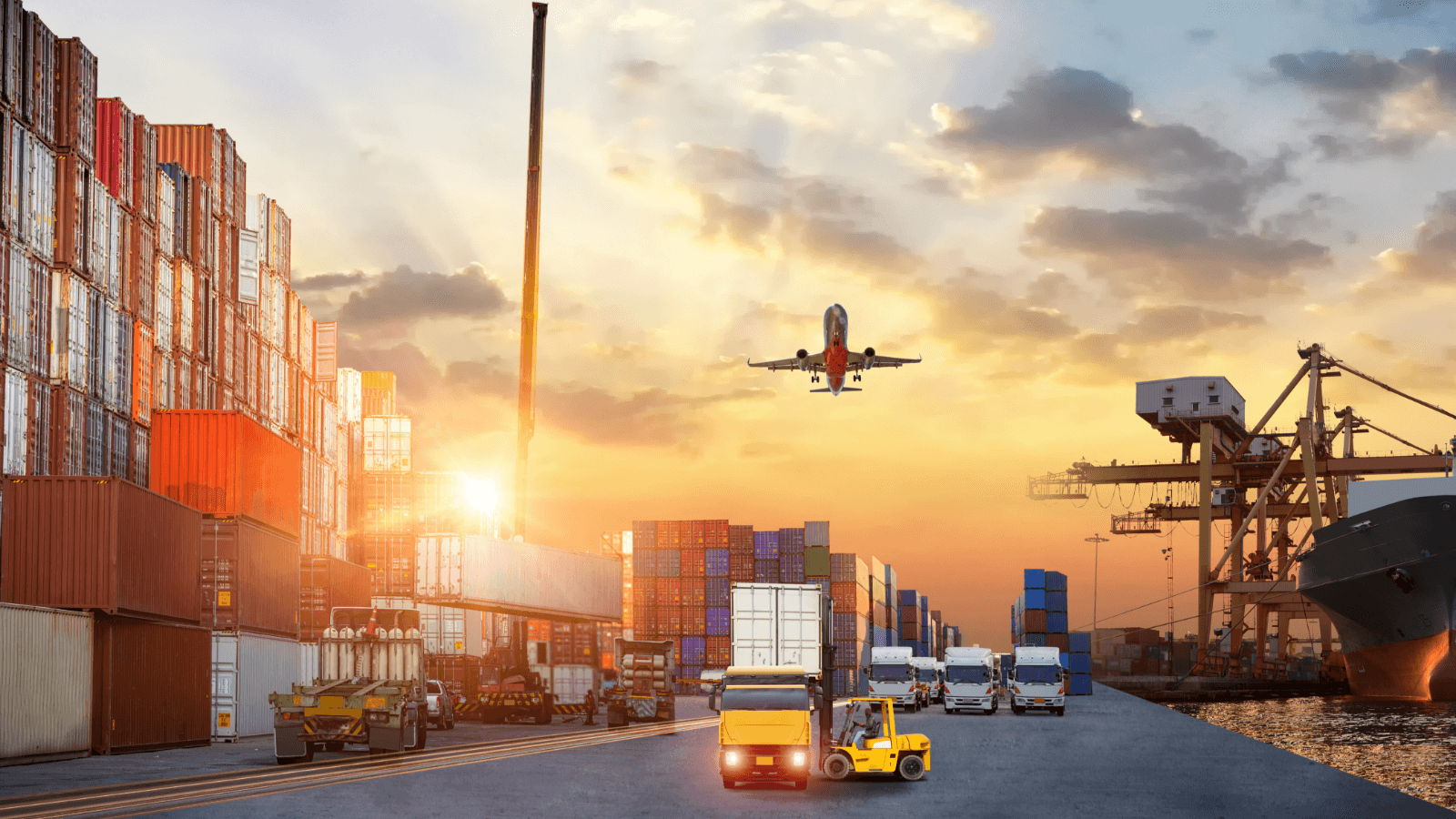The role of digitization in meeting ESG procurement goals

The role of digitization in meeting ESG procurement goals
Sustainability and ESG frameworks are becoming increasingly crucial for businesses across sectors today. As Boston Consulting Group reports, over 80% of companies intend to increase their investments in sustainable practices. In this regard, procurement and supply chain are crucial, given that around two-thirds of the average business’s ESG footprint can be traced back to their partner suppliers.
Building a practical ESG framework for procurement can put your business on the leaderboard in your industry. And digitization plays a pivotal role in accelerating the journey to sustainable purchases. However, before identifying the best practices for sustainable procurement, it is essential to understand the importance of ESG criteria in meeting sustainability goals.
The role of ESG criteria in meeting sustainable procurement goals
Although environmental-friendly processes feature right at the top of the list, sustainability is about more than just this. It encompasses all business operations that can be sustained continuously over time — without affecting the ability of future generations to meet their needs. ESG criteria that focus on environmental, social and governance aspects make this possible.
Including these criteria in supply chain management enables businesses to experience the whole gamut of the benefits of sustainable procurement processes. This includes increased cost savings, reduced risk, easier compliance, improved brand reputation and a future-proof procurement strategy.
Practically speaking, here are some examples of sustainable procurement processes that can be integrated into your business’s ESG framework for procurement:
- Identifying comprehensive ESG criteria to implement in the supply chain
- Transparent supplier evaluation and onboarding based on the above criteria
- Aligning ESG goals with procurement goals for improved efficiency
Digitization: The way forward for sustainable procurement processes
For Chief Procurement Officers (CPOs) keen on implementing sustainable procurement best practices today, digitization is an underrated and often overlooked tool. Here is a closer look at how the right technological and digital solutions can quicken the adoption of sustainability in procurement.
It helps capture ESG data
Data is crucial in the shift from conventional to sustainable procurement practices. Digitization makes it easier to capture ESG data across the supply chain. This puts businesses in a better position to use these insights and streamline organizational procurement.
It improves transparency and traceability
Technology also brings greater transparency and visibility across the supply chain. As a result, it becomes easier for your business to trace and track vulnerable areas, so you can quickly address these weaknesses before they adversely impact your ESG goals.
It minimizes resource wastage
Above all, with the use of Artificial Intelligence (AI), it becomes possible to avoid procuring obsolete inventory, facilitate logistical moves that reduce carbon emissions and monitor waste (and minimize) generation in the procurement process.
Make the switch to sustainable procurement
A partner like Moglix can facilitate the right kind of digital transformation in your enterprise procurement journey. Moglix with its comprehensive and end-to-end digitization solutions speeds up your journey towards a more sustainable and ESG goal aligned procurement ecosystem. Know more about this.
What the India-UAE currency swap means for businesses in the region?

What the India-UAE currency swap means for businesses in the region?
Over the past two decades, cross-border trade between India and the UAE has risen. As a result, exports from the UAE to India have grown at an annualized CAGR of 12.7% — from $1.1 billion in 1995 to $22.1 billion in 2020. Against the backdrop of this scenario, these two regions have entered into currency swap agreements and bilateral trade pacts to strengthen cross-border trade along this route
What is a currency swap?
To make the most of such international contracts, businesses in the regions involved need to know what the terminologies and jargon mean. In the context of a currency swap agreement, it essentially involves two parties entering into a contract to exchange an equivalent amount in their respective currencies directly. They do not benchmark either currency against a third standard currency (typically, the US dollar).
The benefits of currency swap
Currency swap agreements benefit the countries involved as well as the businesses therein in several ways. Foremost among these advantages is the facilitation of more straightforward trade between the two regions. Additionally, the currencies involved are strengthened, and the accompanying trade risk is reduced.
Aside from these direct benefits, currency swap agreements cement the trust between the two regions, opening up more cross-border trade opportunities. This could give small businesses and startups a platform to expand their trade beyond local markets and enter the export business.
Decoding the India-UAE currency swap agreement
Towards the end of 2018, India and the UAE entered into a currency swap agreement to facilitate direct trade between the two regions — without using any third benchmark currency. This bilateral currency swap was for a sum equivalent to ₹35 billion or 2 billion dirhams, which was expected to boost the two local currencies.
In February 2022, India and the UAE signed a bilateral trade pack, the Comprehensive Economic Partnership Agreement (CEPA). Touted as the most significant trade agreement between the two regions, it could enable more efficient trade across the India-UAE border as the world opens up post-COVID.
Benefits of such agreements for businesses in the UAE
In the next five years, the CEPA is expected to boost bilateral trade in goods to over $100 billion and in services to over $15 billion. This, coupled with the impact of the currency swap agreement signed in 2018, will undoubtedly have a positive cascading effect on businesses in the UAE.
For one thing, it will strengthen the buyer-supplier relationships across the India-UAE border. In addition, both established ventures and small businesses get the advantage of enhanced market access abroad, so they are poised to scale greater heights and expand into newer market segments. It also enables more competitive trade between the two countries, resulting in huge business savings since the currency conversion bypasses the US dollar. Lastly, the currency swap agreement could also indirectly facilitate smoother supply chain movements between large and small businesses in India and the UAE.
As borders blur, streamlining e-procurement is key
If your business is based in the UAE, Moglix can help you with this. With comprehensive digital supply chain solutions that are future-facing and aligned with the UAE’s vision for the years to come, we enable businesses in the region to streamline their e-procurement procedures and strengthen supplier relationships. Get in touch with us to learn more.
How will blockchain revolutionize procurement supply chain?

How will blockchain revolutionize procurement supply chain?
Even as the world moves towards a more efficient future, blockchain is slowly but surely transforming B2B transactions on a global scale today. In fact, the total number of B2B cross-border blockchain transactions is projected to surpass 1.7 billion by 2025. The UAE, in particular, is a region of interest because it is quickly emerging as one of the most preferred markets for blockchain startups and businesses.
In a world where blockchain is gaining increasing prominence by the day, businesses need to be equipped to tap into this technology optimally. And where better to begin than the fundamentals?
Beginning at the basics: What is blockchain?
The word ‘blockchain’ is everywhere now, but businesses need to understand what it is all about to truly make the most of this new technology. Simply put, a blockchain is a decentralized and immutable digital ledger. Blockchain technology uses this concept to facilitate transparent yet secure data sharing across a network.
The role of blockchain technology in UAE’s vision for the future
In the journey to the future, the United Arab Emirates has always been one step ahead. So, when blockchain emerged as a potential contender for technologies that could shape the world in the coming years, the UAE embraced it and how! The launch of the Emirates Blockchain Strategy 2021 and the Dubai Blockchain Strategy are some of the most relevant examples in this regard.
Further, the Dubai Future Foundation also established the Global Blockchain Council to explore the possible applications of this futuristic technology. Amid this dedicated focus on blockchain in the UAE, businesses in the region must understand how technology can revolutionize the procurement supply chain.
Three ways in which blockchain can revolutionize the procurement supply chain
Here is how blockchain technology can add value to your procurement supply chain.
The creation of smart contracts
Blockchain can be pivotal to creating smart and tamper-proof vendor contracts. These contracts can support multi-party agreements and even be self-executed, so payments occur on time.
Enhanced supply chain transparency
Improved transparency and visibility across the supply chain make vendor management more efficient for your business. With blockchain, you get the benefit of audit trails, better traceability and verifiable supplier credentials across the procurement cycle.
Streamlined purchase management
Purchase management is a crucial part of the procurement supply chain. Blockchain technology can be a game-changer since it facilitates more efficient order approvals, quicker invoice processing, and a more streamlined procure-to-pay cycle.
The first step in the blockchain-led revolution
Digitalization is the first step that will make your business ready, for when you would need to take that leap into the future of procurement supply chain using blockchain technology. Moglix facilitates has been working with organisations digitally transforming their procurement supply chain. Contact us today to learn more about how your business can keep pace with the newest trend in the UAE’s B2B landscape.
3 reasons to perform procurement spend analytics

3 reasons to perform procurement spend analytics
What are you buying? Whom are you buying from?
How much have you spent on it, and how do the outlays compare to last year?
As an e-procurement professional today, these are only some of the many questions you will need the answers to. This is because monitoring and managing spend across the supply chain are integral to procurement leadership. And spend analytics can help you here.
What is spend analytics in procurement?
Spend analytics is gathering data related to an organization’s expenses, sorting, grouping and classifying that data, and then analyzing it to gather meaningful insights on where every penny goes. The end goal is to optimize costs and maximize profits.
3 key reasons you need procurement spend analytics
Spend analytics is pivotal in controlling and optimizing expenses in the procure-to-pay cycle. Here are 3 key reasons procurement leaders of today should prioritize this process.
1. Improved spend intelligence
With a robust spend analytics program, you get improved visibility of the costs incurred on procurement. Spending intelligence such as this can be crucial to reviving and optimizing your business supply chain. It also allows you to make more confident spending decisions because you are aware of how much your business is spending.
2. Easier identification of savings opportunities
E-procurement coupled with spend analytics also makes it possible for you to identify the areas that hold great potential for cost savings. By cost-cutting where you can and having a flexible procurement budget where needed, your business can benefit from incremental savings that stem from smart expense optimization.
3. Better supplier relationship management
Vendor management is pivotal to building profitable supplier relationships across the procurement cycle. And the information gathered from your data analytics processes can be invaluable in this regard. As a procurement professional today, you can use the insights gathered to partner with suppliers who meet specific criteria, promote supplier development, and build better relationships with your vendors.
Another challenge that procurement managers face is understanding KPIs they need to track to understand spends better. The key performance indicators (KPIs) to measure the effectiveness of your organization’s procurement spend analytics include:
● Cost savings
● Category-wise spending
● Supplier performance
● Vendor management
● Operational KPIs
Optimize your procurement with world-class spending analytics
Moglix offers intelligent spend benchmarking solutions that allow you to compare your procurement expenses with industry benchmarks and optimize your spending. Contact us today to know more about how our spend analytics solutions can help you on your path to absolute digital transformation.
Make the transition to sustainable procurement with this 5-step guide

Make the transition to sustainable procurement with this 5-step guide
With ESG business practices gaining prominence worldwide, sustainable procurement may be more relevant than ever for your business. In theory, sustainable procurement is simple enough; it involves integrating ESG factors into your organization’s supply chain and procurement process. When done right, sustainable procurement can improve your brand reputation, promote better supplier relationships and increase profitability.
Data from the World Economic Forum shows us that sustainable business projects may lead to cost savings of 9% to 16% and can increase revenue by up to 20%. Research by Hackett also reveals that around 92% of companies are already poised to have a sustainable procurement program by 2023.
Your business can also join this league by adopting an immediate and effective action plan to make procurement more sustainable as we journey into a new year.
A simple, 5-step plan to achieve sustainable procurement
Here is what your business can do to make the transition from conventional to sustainable procurement faster and more effective.
1. Identify the critical areas in your supply chain.
Whether you follow conventional sourcing practices or have partial e-procurement implemented in your business, the first step to sustainability involves identifying the areas that matter. For most organizations, the critical areas in the supply chain include sourcing, negotiations, contract management, vendor management and payment, thus completing the procure-to-pay cycle.
2. Evaluate and define sustainable criteria for your business procurement
Once you have identified the key areas in your procurement cycle, evaluate how sustainable (or unsustainable) they are. This will give you a clear idea of how far you have come and how much you need to go. You can then define the sustainable criteria you must meet in each critical area of your supply chain.
3. Perform supplier due diligence
Supplier due diligence may be just as crucial as supplier relationships in the journey to a more sustainable future. Before you sign a contract with a potential supply partner, evaluate their commitment to sustainability and assess if you have shared business values. In the long run, this will make vendor management much more accessible and help you progress more quickly on the path to sustainability.
4. Develop the roadmap for sustainable sourcing
The next step to sustainable procurement is developing a roadmap that makes your strategy for the future clearer and easier to implement. First, identify the critical business practices you want to focus on to future-proof your supply chain sustainably. Automation, paperless contract management, digital transformation and strict adherence to your organization’s ESG goals are essential pillars of your strategy.
5. Roll out your plan and review it periodically.
To complete the action plan towards a more sustainable procurement process, you need to roll out your developed strategy and monitor its implementation. For best results, it is advisable to review your plan periodically, identify weak areas, if any, and work on strengthening sustainable practices within your procurement department.
Want to accelerate the shift to e-procurement and sustainability?
Moglix can help you with this. Our end-to-end procurement solutions can overhaul your supply chain procurement strategies an help on your path of digital transformation, while keeping in mind your sustainability goals. Contact us today to learn more about how this works
Do you have the right strategy to reduce indirect procurement costs?

Do you have the right strategy to reduce indirect procurement costs?
Have you successfully implemented a procurement cost savings program, only to discover that your procurement expenses still need to be under control? If you answered yes to that, indirect costs related to procurement might be the weak link here.
While direct expenses are easier to track and control, indirect spending is easier to miss. This is changing now, with around 70% of procurement leaders increasingly shifting focus to regulate indirect spending in their supply chain. Your business can also benefit from this approach. However, the first step of this journey is decoding what qualifies as indirect costs in the procure-to-pay cycle.
What are the indirect spends in your supply chain?
Indirect procurement costs are those expenses that are not directly related to your production cycle or the sale of goods and services. These outlays may still be necessary for various ancillary areas of your business to function smoothly. Some common examples of indirect spending in procurement include the following:
● The cost of renting your office premises
● The cost of procuring IT support
● The expenses incurred on office stationery and supplies
● The purchase of office furniture
● The purchase of maintenance, repair, and operation (MRO) consumables
Three fail-safe ways to reduce indirect procurement costs
Here are three tried and tested strategies to keep your organization’s indirect procurement costs from ballooning beyond the budgeted limit.
1. Identify the vulnerable points in your procurement spending.
To effectively save on indirect costs, you must first identify areas where your business inadvertently spends more than necessary. A quick analysis of your historical procurement spending can help zero in on these weak links. Then, once you know what to cut down on, you can devise a plan to reduce these outlays.
2. Compare your supplier options before making a decision.
MRO procurement, office supplies, furniture, and other indirect heads may not vary significantly in quality from one supplier to another. So, compare your options and partner with a cost-effective solution vendor. Also, indirect procurement is not directly tied to production. This gives you more freedom to choose suppliers and vendors who offer the best value for money.
3. Automate your procure-to-pay system
Reports indicate that complete digital adoption and e-procurement can deliver cost savings of 45% or more. By extension, automation in indirect procurement can single-handedly help reduce wasteful expenditure and improve profitability. It also improves visibility of expenses and make the supply chain for indirect procurement more effective and efficient.
Want to get off to a great start? Say hello to your smart procurement partner!
A digital procurement partner like Moglix can help streamline your organization’s procure-to-pay cycle and optimize your procurement spends without compromising profitability. Get in touch with us to step into the future of procurement, with our tech enabled integrated e-procurement solutions.
Need for a holistic strategy to maximize ROI across the supply chain

Need for a holistic strategy to maximize ROI across the supply chain
The immediate purpose of supply chain lies in delivering a customer experience that satisfies expectations and fulfils contractual obligations between the supplier and the buyer, with an ultimate outlook of increasing market share while mitigating risk and reducing costs. This is a demand-driven business model; one that functions as a blueprint for creating an integrated supply chain system where customers’ demand and their satisfaction guides day-to-day decisions and longer-term market strategy.
To this effect, there are various key supply chain links that must be addressed as a part of a holistic strategy for meeting customer demand and optimising the processes of procurement, production, distribution, and inventory-keeping.
Maintaining Organizational Agility
Envisioning a sustainable supply chain management system must begin with an initial and pervasive attitude of being quick and efficient in responded to both expected and unexpected disruptions.
“Managing the key supply chain links is the core of adopting a customer-focused approach to business, ultimately leading to satisfying customer demands, and fulfilling contracts to the letter.”
adds Piyush
The ever-evolving landscape of supply chain trends

The ever-evolving landscape of supply chain trends
Businesses have not remained immune to the waves of challenges brought forth by the pandemic. Across sector lines and international boundaries, organizations have had to innovate to survive the new normal and, eventually, thrive.
The New Normal
From supply chain constraints to repeated halts in operations, businesses have had to contend with an array of bottlenecks during this unprecedented time ridden with a global pandemic and the war in Ukraine. One of the major trends to emerge has been organizations’ increasing reliance on technology and digital procurement.
Since every link in the value chain has been adversely affected due to a host of reasons, including supply-side shortages, demand-side stagnation, and a general environment of uncertainty, the path to recovery has been forged with equal parts resilience and restraint.
Upcoming Supply Chain Trends for 2022
Due to the dynamic nature of the supply chain, the trends are ever-evolving and hence unpredictable. However, here are some of the key supply chain trends that surfaced in 2021 and are expected to stay true in 2022:
Widening the value chain basket: One of the main learnings for organizations during the pandemic is the lacunae caused by overreliance on one or two supply chain partners. Businesses are increasingly putting their eggs in different baskets by collaborating with a wider range of suppliers, marketers, and distributors. Though this means increased business coordinations, negotiations etc. across the value chain, organizations that enable seamless digital procurement have come to the industries rescue through their ability consolidate scattered vendor base on a single platform
1. Technology and automation to the rescue: In the wake of the pandemic, businesses are emphasizing leveraging technology to achieve higher accuracy in demand forecasting, production planning, and marketing strategy. Artificial Intelligence and Machine Learning are increasingly being applied to ensure minimal disruptions in the supply chain. Data generated with the help of these emerging technologies are being constantly employed to identify potential areas of growth in business.
2. Building resilience against the global logistics disruption: The widespread disruption of the global logistics chain has caused businesses severe headaches and compelled them to build resilience to production delays, raw material shortfalls, and extremely volatile demand trends. This has driven a drastic restructuring of the supply chain for the better.
3. Supply Chain Trends in the UAE
Being a key member of the GCC, the UAE has robust free trade associations with several countries. In addition to this, the country has bilateral trade agreements with India, The Netherlands, etc. Recently, UAE announced its intention to deepen its ties with growing economies. Some of its business negotiations with countries like India, Turkey, and Indonesia seem to indicate a positive trend in this direction.
Some of the recent supply chain trends in the الإمارات العربية المتحدة are:
- A rise in the prominence of e-commerce and related logistics
- Growth of the pharmaceutical sector
- Easing of duties on import-exports
- Growth of bilateral agreements for trade
The Foreign Trade Ministry of UAE feels that these trade pacts are bound to increase foreign direct investment and enhance business growth in terms of volumes.
Choose Moglix To Stay Ahead of the Curve
The outlook for the UAE logistics market seems to hint at a robust 6.5% CAGR projection for the period of 2022-2027. With supply chain trends picking up pace in what we see as a potential post-pandemic world, it is important for businesses to stay ahead of the curve in order to maximize value.
If you are looking to transform your supply chain and focus on digital procurement, Moglix can help you stay ahead of the curve. We aim to optimize strategic procurement and bring in supply chain efficiency for organizations across various sectors, including manufacturing, infrastructure, and Oil and Gas in the UAE.
Equipped with what is said to be future facing technology and dynamic capabilities such as Integrated Procurement Solutions, Automated Workflows, and Catalog-Based Buying, Moglix ensures that you can take your organization’s operations to the next level by enhancing efficiency and maximizing cost-effectiveness. Visit our website to know more.
Strategies To Address Procurement Woes In a Volatile Supply Chain Market (Turning Chaos Into Control)

Strategies To Address Procurement Woes In a Volatile Supply Chain Market (Turning Chaos Into Control)
Part Two – The Solutions
As discussed earlier in part 1 of this blog, the global COVID-19 pandemic and ongoing war have forced organizations to withstand a highly volatile supply chain environment. The prevailing procurement environment is costlier due to the exponential rise in the cost of shipping and increased operational costs. In addition to these reasons, continuing exclusive use of the existing legacy technologies and switching to spot bidding for logistics by the organizations are adding burden to the businesses. As a wise option for surviving the highly volatile supply chain environment, businesses should turn their focus to digital procurement and technology.
From Chaos to a Semblance of Control
Faced with an array of challenges, including higher costs of freight, reduced revenue, extreme pressure on bottom lines, and persistence with obsolete legacy systems, businesses are increasingly turning to technology and digital procurement to ensure their supply chain and sourcing strategies can keep up with the high volatility of the market.
Here are some of the solutions businesses are adopting to attain excellence in their logistics management.
1. Evolution, Adaptation, and Responsiveness: A high degree of volatility in the supply chain and the business environment calls for a correspondingly high degree of adaptation on the part of businesses. This is why most businesses are switching to Dynamic Market Sourcing.
As opposed to Traditional Cycle Sourcing, its dynamic counterpart enables organizations to constantly assess the market, have better communication with their supply chain partners, and manage the ever-changing landscape of freight costs, and the influx of new suppliers.
2. Leveraging technology to stay ahead of the curve: In this day and age, businesses are largely driven by data. With high fluctuations on the demand and supply side alike, businesses must leverage technology and data-based insights to be as dynamic and adaptive as possible.
From better demand forecasting to an increased emphasis on automation, there are myriad ways through which the challenges of a highly volatile supply chain can be met head-on and with success.
3. Risk management: Risk is an integral facet of any business, and the higher the accuracy of risk assessment is, the higher an organization’s chances to mitigate risks in an efficient manner. One of the key strategies in managing supply chain-related risks is having multiple suppliers instead of one or two.
Another solution is to always be prepared by analyzing market trends and conducting what-if analyses. This way, your organization can be well placed to deal with a high-risk situation. Risk assessment is, in many ways, akin to an airbag in a vehicle. It protects your business from potential crashes.
The Future of Supply Chain
You can now bring digital procurement to the forefront of your business and excel in a highly volatile supply chain environment by relying on Moglix’s Integrated Procurement Solutions, Automated Workflows, and Catalog-Based Buying Solutions, amongst others, to revolutionize your business’s approach to logistics. To know more, visit our website.
Strategies To Address Procurement Woes In a Volatile Supply Chain Market (Turning Chaos Into Control)

Strategies To Address Procurement Woes In a Volatile Supply Chain Market (Turning Chaos Into Control)
Part One: The Challenges
Change is the only constant and the global COVID-19 pandemic had brought this universal truth home in an unprecedented manner. Businesses across the globe had found themselves faced with severe supply chain and sourcing challenges, leading to higher volatility and higher risk. In the face of such bottlenecks, traditional approaches to supply chain and logistics management were no longer effective or feasible.
Viability amidst volatility
It is no secret that one of the things that make businesses thrive is stability in processes. The pandemic and the ongoing war, however, disturbed the very foundations of stability and compelled organizations to withstand a highly volatile supply chain environment. Here are some of the challenges faced in the prevailing procurement environment:
1. Building capacity is now costlier: One of the main characteristics of the present sourcing market is the exponential rise in the cost of shipping. The rise in container freight and air freight has made it drastically difficult for businesses to build and sustain capacity and stability. For instance, before the pandemic struck the world, the freight for the China to USA route was around $1,500 (for a 40-foot container). This price is now anywhere between $10,000 to $15,000, making it financially nonviable.
2. Preserving the bottom line is now harder: With the rising cost of materials as well as shipping costs, organizations are increasingly grappling with higher operational costs. The problem is exacerbated by the constant decline in demand and, in turn, revenues. The combined effect is a significant drop in the bottom line of organizations.
3. Continuing with Legacy technologies: At a time when digital procurement is being looked at as a key driver to solve businesses’ supply chain woes, several organizations are still continuing with old and obsolete legacy systems. Not only are those systems time-consuming and cost-heavy, but they are also non-responsive to factors such as price compression, capacity changes, etc.
4. Switching to spot bidding for logistics: Traditionally reliant on annual freight contracts with low prices, businesses now have to manage the necessary switch to spot pricing in logistics. The restrictions in the capacity and movement of air cargo in the wake of the pandemic have brought spot price bidding to the fore, placing a higher than ever before pressure on their operational costs.
The Bottom Line
In order to survive and thrive amidst a highly volatile supply chain environment, businesses must turn to digital procurement and technology. This is where Moglix can help you transform your business through our Catalog Based Buying, Automated Workflow, Enhanced Visibility, and Integrated Procurement Solutions. Know more on our website.

